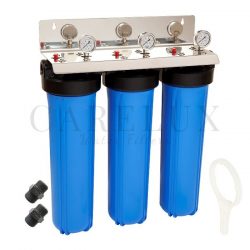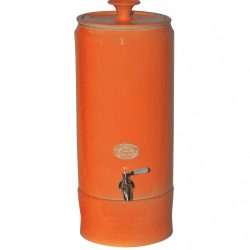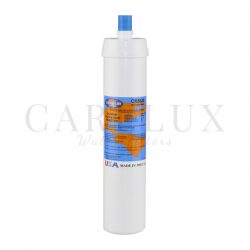FINDING THE RIGHT WATER TREATMENT PRODUCTS
You often know when your water is ”bad”. It smells, doesn’t lather your soap, has funny taste, or comes out of the faucet in odd colors. Or, perhaps water testing has detected contaminants of concern. What do do next?
CONDITION YOUR WATER
Whether your water is hard or contaminated, there are effective water treatment technologies ready to help. Water conditioning is the treatment of water to modify, enhance, or improve it so it meets a specific water quality need, desire, or standard. Or just call it water treatment. There are many different technologies that get the job done.
Exchanging ions to make water softer
Remember: Ion exchange water softeners are among the most common ways of softening water. The typical ion exhange system consists of a presure tank filled with sulfonated, polystyrene beads that are capable of removing hardness ions from water, and replacing them with softer ions, like sodium. These units are connected to a brine tank that’s filled with salt, which periodically regenerates the resin beads.
The unit’s tiny beads attract and hold onto calcium and magnesium ions as water passes through them. When the beads become so saturated they can’t hold any more, the unit rinses them with salt, which scrubs off the mineral deposits and gets them ready to absorb hardness ions again.
If you’ve got this type of water softener, you can set it to regenerate at preset times, or if it’s a bit more sophisticated, it can base regeneration on your actual water use. Systems that measure water use and regenerate accordingly, called demand initiated regeneration (DIR), may be more efficient because they only regenerate as needed. Systems that automatically regenerate on set time intervals, called time clocks, certainly simplify the process. But sometimes these regenerate more often than necessary, wasting salt, or they leave users in hard water when water demand is higher than normal.
Filtration may be the answer you need
Although water softeners get rid of some heavy metals along with hardness, water filtration systems are the best way to remove organic and inorganic materials such as microbiological contaminants and particulates such as sand, rust, or silt. Water filters remove these impurities with a fine physical barrier, chemicals, or some method to help clean water and make it suitable for drinking or other use. There are many filtration solutions available; they generally fit into two categories.
Point of Use
Point-of-Use (POU) devices treat water at the point of consumption. The technology provides the final barrier to the contaminants of concern before the water is consumed or used. Among the choices are:
Gravity devices: Such as countertop pitchers that use carbon filters.
Inline filters: Packed with filtration media or membranes and installed in, or perhaps underneath, a sink.
Reverse osmosis units: Installed on, in, or underneath a sink.
Ultraviolet (UV) technologies: Uses light to deactivate pathogens so they can’t grow or reproduce.
Distillers: Turns water into steam and back again and in the process gets rid of nearly all kinds of biological pathogens and a host of contaminants.
Appropiate final barrier treatment can reduce chemicals like:
- Disinfection by products
- Corrosion products (for example, lead) from the distribution system and home plumbing.
- Disease-causing microbes
- Trace levels of endocrine disruptors, personal care products, and pharmaceuticals
Point of Entry
Point-of-Entry (POE) devises are whole-house treatment systems mainly designed to reduce contaminants in water intended for showering, washing dishes, and clothes, brushing teeth, and flushing toilets. Options include:
- Water Softeners: Discussed in the “Exchanching ions to make water softer” section.
- Sediment and tank filtration systems: Removes contaminants as water enters the home.
- Large inline filtration systems: Installed where water enters the home plumbing system.
- Final barrier systems: Sometimes used by municipalities to supplement or even replace centralized water treatment facilites. These systems do the treatment at the location of the end user, which means contaminants that are picked up between the treatment plant and the home are no longer a problem.
Remember: Choose filtration media guided by the specific situation. For example, you may need a system that uses greensand madia. It’s good for getting rid of contaminants such as hydrogen sulfide. As with the resin beads in a water softener, many types of media need recharching or replacement from time to time.
Remember: Activated carbon is a widely used filtration substance that targets various volatile organic compounds, such as benzene, trichloroethylene, and various pesticides and petroleum related compounds. Maintenance is as simple as swapping out a cartridge once or twice a year.
You may also choose ceramic or synthetic fiber microfilters, which can sift out tiny contaminants including various microbes and tiny sediment particles.
Moving forward with reverse osmosis
Sometimes shortened to the acronym RO, these sysrem force water, under pressure, into a module that contains a semipermeable membrane and a number of other filtration steps. A typical RO system has a prefilter designed to capture larger particles, chlorine, and other substances; a semipermeable membrane that captures more contaminants; an activated carbon filter that removes residual taste, odor, and some organic contaminants, and a storage tank to hold the treated water for use.
You can get a whole-house RO, but more commonly, a point-of-use RO System would be on your countertop or installed undersink. They’re great for treating water for cooking and drinking, but they don’t usually produce large amounts of treated water – more like 3 to 10 gallons a day. For the reason, typically people choose to install RO-treated faucets in the most popular areas of the home such as kitchens and bathrooms, as opposed to installing for every drinking tap.
Just like any other kind of filter technology, reverse osmosis systems require regular maintenance. That includes periodically replacing the unit’s prefilters, postfilters, and membrance modules.
Remember: Distillation is one of the oldest water-purification methods around. Distillation will effectively remove minerals, most chemicals, and many bad tastes from tap water. These systems heat water until it reaches its boiling point and begins to vaporize, and then feed the vaporized water into a condenser that cools the steam and converts the water back to liquid form.
A vent to discharge gases is a common feature, and these units may also include an activated carbon filter to pull out even more contaminants. Most home distillers produce only small amounts of treated water daily. They require periodic cleaning and descaling to remove mineral build up.




